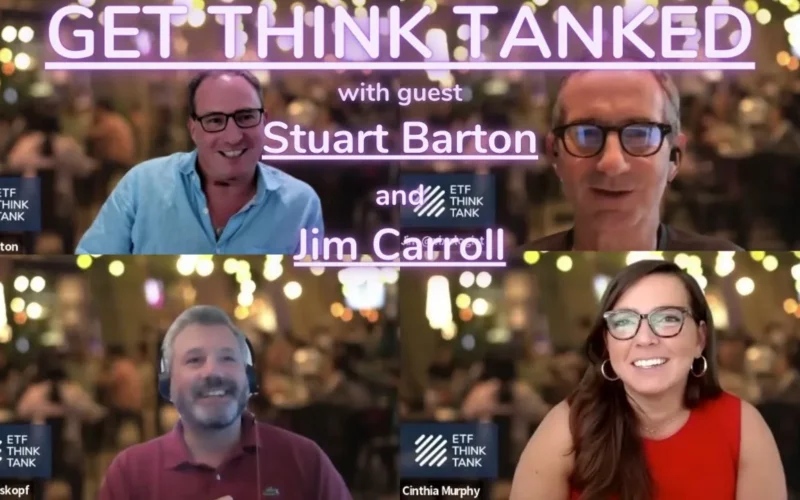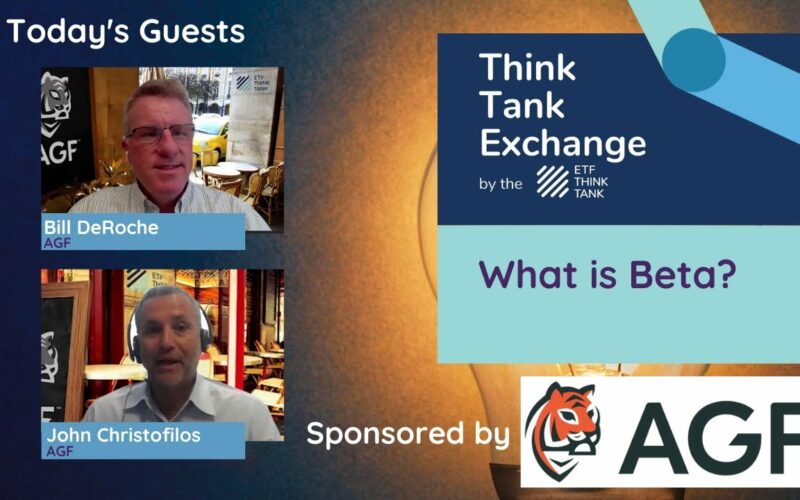2022 has been all about volatility and how investors should manage it in their portfolios. With stocks and bonds both in and out of bear market territory, there’s a lot of focus on ways to hedge portfolio risk in an effective way. Stuart Barton, the Chief Investment Officer of Invest In Vol and Volatility Shares, and Jim Carroll, Portfolio Advisor and Manager at Toroso Advisors, join the Think Tank to discuss the state of volatility in the markets.
VIX products were viewed as easy money until 2018 when volatility spiked and some of the largest ETPs went bust. Since then, contango in the VIX markets hasn’t disappeared, but it is become less persistent. As “volmaggedon” gets further and further in the rearview mirror, interest in these products has drawn a lot of interest again and that could help stabilize contango going forward. Prior to 2018, investors thought they could make money almost daily by shorting volatility. They’ve since learned that this isn’t always the case.
Are investors approaching volatility investing differently today? Barton says that from his point of view, not a lot has changed, although the way they invest in it has. He feels that people’s trust in exchange-traded notes has changed, and they realize the structure has disadvantages. Since they are credit notes, the issuing bank could default or simply close out the notes at any time. Carroll notes that if you understood how they were constructed and operated, they did what they were set up to do for the most part. He does agree that there are some disadvantages and issuers are trying to address some of the structural issues.
Carroll says that it is impossible to forecast the future of volatility, but he uses a fairly simple number as a helpful guideline – the rolling 1-year VIX moving average. He feels that if it gets above 20, there is a tendency for the markets to experience disruption. He clarifies that the VIX and volatility is a condition, not a trigger or trade signal. He usually feels better about investing in the markets if the rolling VIX average gets below 20, but, again, that’s just a guideline.
How should investors approach using the VIX to maximize its value? Barton says that the argument for investing in volatility is the same as the argument for having life or homeowners insurance. Derivatives fulfill the need for insurance and protection. He explains that while market participants will say that VIX products aren’t buy-and-hold investments, they can be if you want to use them as protection and are aware of the risk/return profile. They are not instruments where you’d expect a consistent return or profit. It is insurance that can help protect you in a worst-case scenario.
There’s a lot of debate on whether or not the VIX is an effective indicator or if it’s constructed correctly. It is supposed to be implied volatility looking forward over the next 30 days, so there is some investor expectation built into it. The composition of the S&P 500 will also play a role. It can help mute some volatility, but the correlation of the index’s components also plays a factor. If it becomes top-heavy or dominated by one sector, such as tech over the past decade, it can potentially enhance the volatility profile.
Other key takeaways:
- Investors need to be aware of the structural issues of investing in VIX ETPs. ETNs can be closed or delisted with little warning. Products, such as VXX, are closed in terms of creations right now. These factors can impact how traded products are priced relative to the underlying VIX. There are logistical risks that need to be considered.
- There are virtually no other volatility markets that have liquid futures trading. You can try to synthesize something using different securities, but it’s not easy.
- Is there an opportunity for innovation in VIX products? Barton says that most investors aren’t interested in the math. They just want the products to work the way they expect it to. The VIX was designed to be an index, not an investment, so there may not be the same interest in innovating.
You can watch a replay of this virtual happy hour on our YouTube channel here. While there, subscribe to our channel to stay up to date on our latest content.
Disclosure
All investments involve risk, including possible loss of principal.
The material provided here is for informational purposes only and should not be considered an individualized recommendation or personalized investment advice. The investment strategies mentioned here may not be suitable for everyone. Each investor needs to review an investment strategy for his or her own particular situation before making any investment decision.
All expressions of opinion are subject to change without notice in reaction to shifting market conditions. Data contained herein from third party providers is obtained from what are considered reliable sources. However, its accuracy, completeness or reliability cannot be guaranteed.
Examples provided are for illustrative purposes only and not intended to be reflective of results you can expect to achieve.
The value of investments and the income from them can go down as well as up and investors may not get back the amounts originally invested, and can be affected by changes in interest rates, in exchange rates, general market conditions, political, social and economic developments and other variable factors. Investment involves risks including but not limited to, possible delays in payments and loss of income or capital. Neither Toroso nor any of its affiliates guarantees any rate of return or the return of capital invested. This commentary material is available for informational purposes only and nothing herein constitutes an offer to sell or a solicitation of an offer to buy any security and nothing herein should be construed as such. All investment strategies and investments involve risk of loss, including the possible loss of all amounts invested, and nothing herein should be construed as a guarantee of any specific outcome or profit. While we have gathered the information presented herein from sources that we believe to be reliable, we cannot guarantee the accuracy or completeness of the information presented and the information presented should not be relied upon as such. Any opinions expressed herein are our opinions and are current only as of the date of distribution, and are subject to change without notice. We disclaim any obligation to provide revised opinions in the event of changed circumstances.
The information in this material is confidential and proprietary and may not be used other than by the intended user. Neither Toroso or its affiliates or any of their officers or employees of Toroso accepts any liability whatsoever for any loss arising from any use of this material or its contents. This material may not be reproduced, distributed or published without prior written permission from Toroso. Distribution of this material may be restricted in certain jurisdictions. Any persons coming into possession of this material should seek advice for details of and observe such restrictions (if any).












